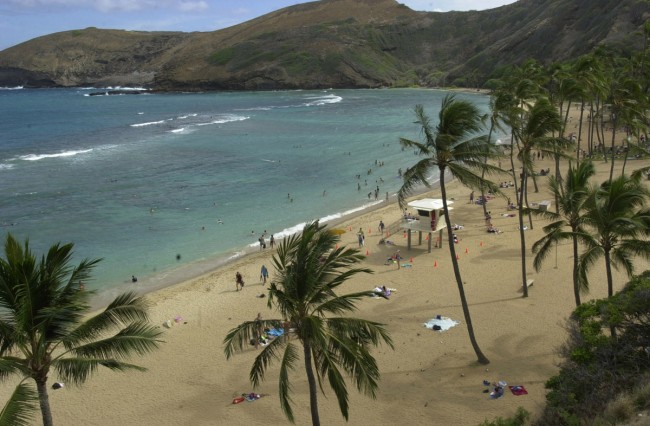
Snorkeling in Hanauma Bay

In 1967, Hanauma Bay, a former volcanic crater, was designated as a protected area for the conservation of marine life.
Marine Life Conservation Park to snorkel in Hanauma Bay.
In 1967, Hanauma Bay, a former volcanic crater, was designated to conserve native marine life.
Hanauma Bay is the floor of a volcano crater that opened up to the ocean when its outer wall fell. Hanauma Bay, which translates to the curved bay, was designated as a marine life conservation area and underwater park in 1967. Protected from strong currents and waves, it is perfect for swimming and snorkeling.
One of the island’s most popular snorkeling beaches and well-liked natural attractions, Hanauma bay is situated on the southeast coast of Oahu (approximately 10 miles east of Waikiki). Daily, 3,000 people You must pay an admission fee and view a brief educational seminar about the bay.

Hanauma bay-oahu-Hawaii-Photo-Ron-Caspi-Hawaiian-Edge
Advice:
Get there early to guarantee parking and clear water.
Pack plenty of water and reef-safe sunscreen to avoid the sweltering heat.
Be respectful, and do not litter or damage the reef.
Highlights:
Hanauma Bay attracts more than one million visitors annually and is one of the most popular tourist spots. The sandy beach is perfect for lounging, but the real gem is snorkeling in the reef.
Swimmers often encounter an array of reef creatures, including surgeonfish, tangs, parrotfish, butterflyfish, and many more.
The surrounding bay includes several hiking paths with equally beautiful views. On clear days, the islands of Molokai and Lanai may be visible across the channel. Also, during the winter season, even humpback whales grace the surrounding ocean.
Must Know:
Hanauma Bay’s fame has its drawbacks, chief among them its effect on marine life. The deployment of conservation measures was therefore necessary. For instance, beach and parking lot access have been heavily restricted. Formerly a beloved pastime, feeding fish is now officially forbidden. Volunteers also provide visitors with information to help prevent further environmental harm to the preserve. Thankfully, these and other initiatives effectively brought Hanauma Bay back to its former splendor.
Hanauma Bay was rated the best beach in America in May 2004 by renowned environmental scientist Doctor Stephen Leatherman (Dr. Beach).
Although shielded from the open ocean, strong currents still pose a risk; unless an expert swimmer, it is vital to stay close to shore.
According to statistics, this is one of Oahu’s riskiest beaches due to its combined popularity and several potential risks. Avoid standing on rock ledges where waves are breaking because surges can be quite deadly if they catch someone off guard.
Never go on or touch the coral reef; this can damage the coral and disrupt the delicate ecosystem. To learn more about protecting Hanauma Bay, go here.

Visit the Hanauma Bay Education Program for additional details regarding Hanauma Bay conservation.
Parking is scarce and fills up quickly, so get there early.
Tags snorkeling, swimming, sunbathing, pristine, beaches, places, family, guidebook, oahu, things to do
Lifeguard
Yes
Facilities
The Hanauma Bay experience was recently improved, with the addition of amenities, such as the award-winning Marine Education Center, which debuted in August 2002. Visitors may view a short movie on preservation and discover the various ways they can support the conservation of its vulnerable live reef ecosystem.
Other additions include restrooms, showers, phones, picnic spots, a center for education, rentals of snorkeling equipment, and lockers.
Access






























You must be logged in to post a comment Login